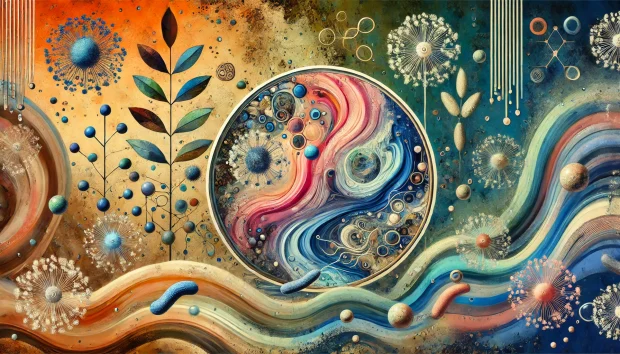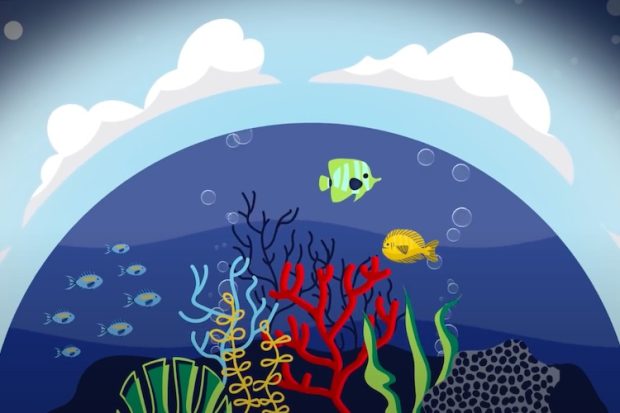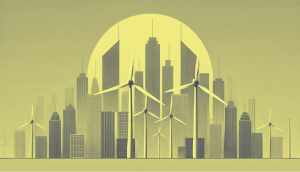Environmental Metagenomics
MIT Research Scientist Christopher Carr on terrestrial Mars analogues, the importance of computer science in a...
I study the biosphere as a whole, and this is a relatively new development. Most of my work concerns the land’s biosphere, but, of course, the ocean has a biosphere in it too. The study of the biosphere on a global scale is something that’s relatively recent. The new perspective that we have now only dates back to about the 1980’s or so, when it had finally become clear that human activities were massively modifying ecosystems, and not just ecosystems but indeed the composition of the atmosphere. And that two things were interrelated.

In the late 19th century a Swedish chemist called Svante Arrhenius theorized that industrial activities involving fossil fuel burning must be putting carbon dioxide into the atmosphere and increasing its concentration. He also theorized that this should be leading to global warming, and he made a calculation about how large it would be. The calculation is fairly close to leading modern calculations of this effect. But it couldn’t be tested, because there was no instrument that could measure CO2 concentration accurately enough to find out whether it was increasing or not. That actually had to wait until the 1950’s when Keeling invented a machine that could measure CO2 with high precision. And as soon as it had been set up for a couple of years, it had become very clear that CO2 was increasing. Of course, it’s been continuing to do so ever since. We had to wait off a century for a confirmation of Arrhenius’s ideas about CO2. We had to wait even longer for confirmation of his ideas about global warming, because climate is a very complex thing. Climate is not just changing uniformly from year to year. Climate, we know, is warming, but if we look back over the record, the signal is not really clear until about the 1980’s. It’s only about then the signal appears from the noise. Now we know that Arrhenius was right.
But a lot of other changes in our way of looking at the biosphere came with this, because, of course, CO2 is fundamental to plant life, plants dependent on CO2, they take it up and decomposing microbes and put it back. And the flux involved is enormous, so large, in fact, that any perturbation to that flow of carbon dioxide into ecosystems and back out again, any small perturbation would be of a similar magnitude to the amount that we are releasing with fossil fuel burning. It’s gradually become clear that there is an intense interaction between the biosphere and the atmosphere, and that there is something which we now call the global carbon cycle which is the exchange of CO2 between the atmosphere and the ocean, and between the atmosphere and the land. That’s basically all one system.
With this new understanding of the biosphere there is a considerable pressure to develop global models of how ecosystems work, and how climate modifies ecosystems, how climate controls ecosystems, and how ecosystems then, in turn, influence the carbon cycle. It was also gradually becoming clear that ecosystems would have more direct effects on climate, because most of the water that comes into the atmosphere of land surfaces is actually coming through plants. Any change in the nature of the vegetation cover can influence the water exchange and it can also influence all the physical properties like the heat absorption.
We have system models, which are climate models, which are originally derived from weather forecasting models, but adapted to a longer time perspective, but these models now actually incorporate models of the biosphere. That seems like quite an achievement. But there are a few problems. One of the problems is that when they’re asked to make projections into the future on the various scenarios, they all give different answers. And I guess they can’t all be right. There are also have quite large biases. So there’s a lot of work that needs to be done. The models are getting more and more complex at the moment, but they’re not really actually getting better.
What has now been realized by many scientists in the field is that we need to do it better. With hindsight, in a way, we did this in too much of a hurry. Models have been developed independently by different groups without much cross-checking, without enough comparisons with data. Data here are a key issue, because when we first started to work on these models there were very few data of the large-scale kind that we would need to test all of our assumptions.

The situation now has changed radically and very much for the better, so not only we have the highly precise measurements of carbon dioxide and other constituents of the atmosphere, but also we have local scale measurements of the flux of CO2 and energy between ecosystems and the atmosphere at several hundred sites across the world. And we have physiological measurements of the plant level which is, of course, small scale, but it becomes a large scale when you have thousands of measurements made by different groups that have been compiled into databases. And finally we have the tremendous resource of data from satellites which are now, of course, continuing, are just giving us longer and longer records, but also records that are getting more precise. Also we have more properties of the land surfaces, such as this greenness which is obviously fundamental, because the green color is chlorophyll (that’s what does this photosynthesis, that’s what takes up CO2), and we also have other properties, such as the reflectivity of the land surface. And even now indicators of important quantities such as the light use efficiency of photosynthesis, remarkably, can actually be measured from space.

MIT Research Scientist Christopher Carr on terrestrial Mars analogues, the importance of computer science in a...

Understanding wind energy and how electricity is generated from wind

Molecular Biologist Richard Henderson on the lipid bilayer, mitochondria, and the evolution of organisms